[/caption]
‘In Flight’ …. That’s the heart of the dramatic plan to showcase a Space Shuttle Orbiter being proposed by the Kennedy Space Center Visitor Complex (KSCVC) as they seek to win the heated competition to become the permanent new home to one of NASA’s three soon to be retired Orbiters.
Honoring the past, embracing the future of human spaceflight and celebrating the spirit of human determination; this is the new theme planned by the Visitor Complex at Kennedy so that guests of all ages will feel like they are embarking on an interactive space expedition. See the ‘In Flight’ graphic illustration above.
Some 21 science centers and museums across the US are bidding for the once in a lifetime chance to house NASA’s surviving shuttle orbiters; Discovery, Atlantis and Endeavour.
“The Kennedy Space Center is the home of the Space Shuttle unlike all the other places,” said Bill Moore, Chief Operating Officer of KSCVC. I spoke to Moore at KSC in an exclusive interview for Universe Today.
“All of the shuttle missions have launched from here, not anywhere else. So Kennedy is their home. And they all eventually come back here at the end of each mission. So we have a compelling story to tell about their history at KSC and the future.”
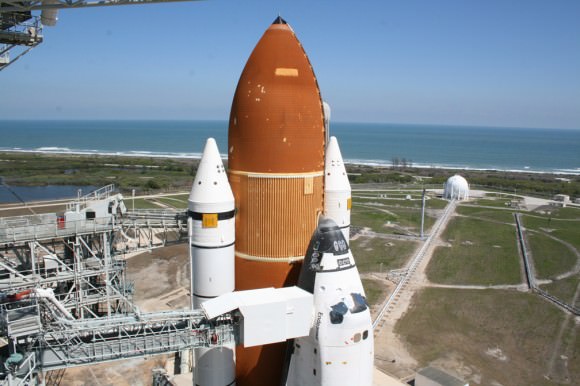
Shuttle orbiter display at the Kennedy Space Center Visitor Complex will include many shuttle artifacts, including the White Room - shown here attached to shuttle Endeavour. Astronauts walk
through the white room to enter the shuttle crew cabin. Credit: Ken Kremer
The Smithsonian National Air & Space Museum, Washington, D.C., has long been expected to be picked as the retirement home for Space Shuttle Discovery, the oldest orbiter. That leaves Atlantis and Endeavour remaining in the bidding war. Since the Smithsonian currently displays the shuttle Enterprise, that unflown orbiter would also be up for grabs by another venue.
NASA Administrator Charles Bolden will decide the final site selections. He is scheduled to announce the winner of the nationwide competition on April 12, which is the 30th anniversary of the first shuttle flight (STS-1) by Columbia on April, 12, 1981.
Another location that plays a pivoital role in the U.S. space program is NASA’s Johnson Space Center in Houston, Texas, home to Mission Control. Johnson Space Center is also home base for the shuttle astronauts and houses the facilities where they train for space missions. The Johnson Visitor Center – Space Center Houston – has proposed a 53,000 square foot pavilion with interactive exhibits.
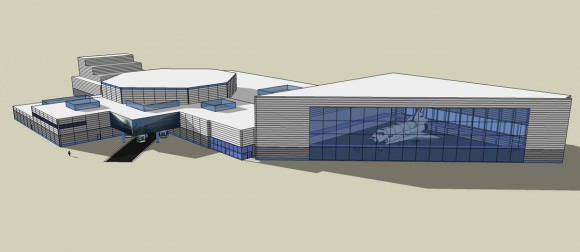
Many of those who work on space projects feel strongly that two of the orbiters should unquestionably be awarded to the Kennedy Space Center (KSC) and the Johnson Space Center JSC) since these are the two locations most intimately involved with the Space Shuttle program. All the crews were trained at JSC and blasted off to space from KSC.
Among the other contenders in the running to house an orbiter are; the Intrepid Sea-Air-Space Museum in New York City; the Adler Planetarium in Chicago; the National Museum of the Air Force in Dayton, Ohio; the U.S. Space & Rocket Center in Huntsville, Alabama; the Museum of Flight in Seattle.
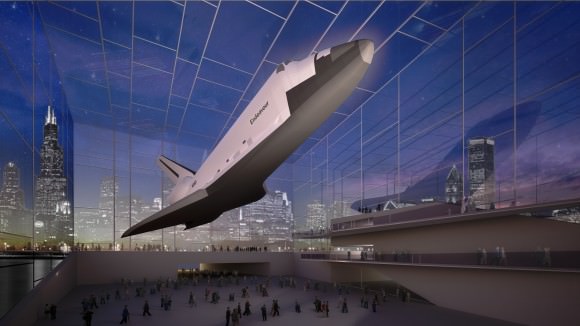
At the Kennedy Visitor Complex, a brand new 64,000 square-foot hall would be constructed to display the orbiter “In Flight”. The exhibit would engage viewers in an up close experience to see how the vehicle actually worked in space and also feature its major accomplishments; such as building the International Space Station (ISS) and upgrading the Hubble Space Telescope.
The orbiter home is projected to cost some $100 million and would be the marquee element of the master plan entailing a transformative overhaul of the entire visitor complex at Kennedy, according to Moore.
The KSCVC concept is outlined in a thick book with extensively detailed story boards and drawings. Clearly, a lot of hard work and thought has gone into designing KSCVC’s proposal to house an orbiter and integrate it with a complete renovation and update of the spaceport tour facilities. The goal is to satisfy the interests of the whole family- not just hard core space geeks.
“We (KSCVC) will display the orbiter tilted, like it is flying in space and at work. Because that’s the way people think about the orbiter – working in space. Not sitting on the ground on three wheels,” Moore explained to me.
“So, our job at KSC is to show the shuttle’s working time as it is flying in space. The payload bay doors will be open and the robotic arm will be extended. Some type of cargo will be inside. We will also show the Hubble and the ISS with models, giant video screens and murals, because we think that’s key to understanding the role of the shuttle.”
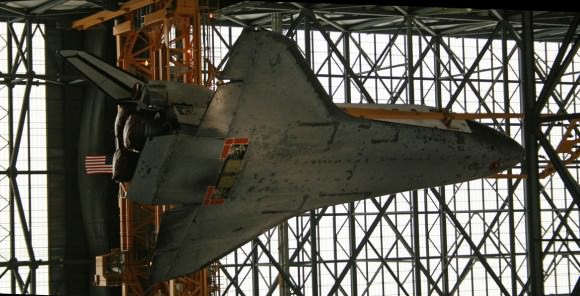
This tilted view of Space Shuttle Endeavour ‘In Flight’ may give an impression of what visitors might experience in the shuttle orbiter exhibit planned by the Kennedy Space Center Visitor Complex if they are selected as a permanent home for the retired vehicle. I snapped this photo inside the Vehicle Assembly Building while Endeavour was vertically tilted and being hoisted by cables in mid-air. The photo has been rotated 90 degrees to look as though it were horizontal. Credit: Ken Kremer
Moore told me that this will be the largest building ever constructed at KSCVC, even bigger than the popular Shuttle Launch Experience completed a few years back.
“When people come into the exhibit, their first view will be to see the orbiter as though someone would see it by looking out from the ISS, up against a gorgeous backdrop of the Earth, the Sky and the Universe.”
“The point is to make you believe that you are actually seeing the orbiter in space. Visitors will be able to view the orbiter from many different angles,” said Moore.
The shuttle will be shown as it really looks and is flown with the heat shield tiles, with all its scorch marks, pits, scars and imperfections.
“We do not want the orbiter to be polished to a pristine state,” Moore stated firmly.
“We want to expose as many people as possible from around the world to this wonderful vehicle and to what’s happened up there in space.”
“The vehicle is just part of the story. The story is much bigger.
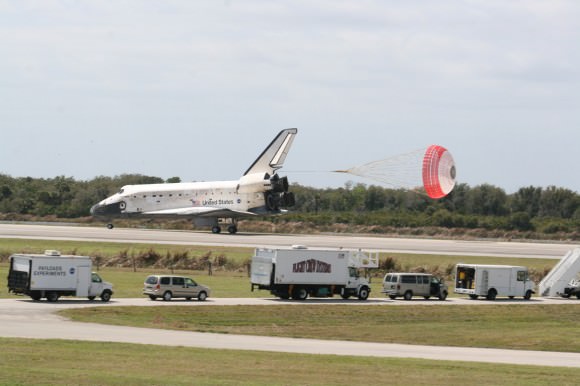
Space Shuttle Discovery concluded her magnificent final journey with a safe landing on March 9, 2011 at the Kennedy Space Center in Florida. Discovery is the first shuttle to be retired and will likely be housed at the Smithsonian National Air and Space Museum in Washington, DC. Credit: Ken Kremer
“The purpose of the display building is that we want to show the whole story of what the shuttle has done and all the major milestones. The people who processed and cared for the orbiters are also part of the story,” Moore amplified.
“We will remember and show the story of those who made the ultimate sacrifice, what we learned from the accidents and then fixed lots of issues to get to a better flight system.”
I asked Moore, when will the exhibit open ? “I would like to open the exhibit by mid to late 2013,” he replied.
The orbiter will be showcased with components from the shuttle’s history. “We have the beanie cap, the white room and a fairly large collection of many other artifacts, parts and items beyond just the orbiter that will be used to tell the story of the shuttle program.”
“The shuttle story covers 30 remarkable years,” said Moore.
Only two flights remain until the shuttles are forcibly retired for lack of many and some say willpower to continue exploring.
The final flight of Endeavour on the STS-134 mission is set for April 19. Atlantis is honored with the shuttle programs very last mission, STS-135, slated for late June 2011.
Discovery just landed on her historic final mission on March 9 – a thrilling and bittersweet experience for all who work and report on the shuttle program. Discovery is being decommissioned and now belongs to history although she has a lot of life left in her.
Stay tuned for the April 12 announcement of the Orbiter homes selected.
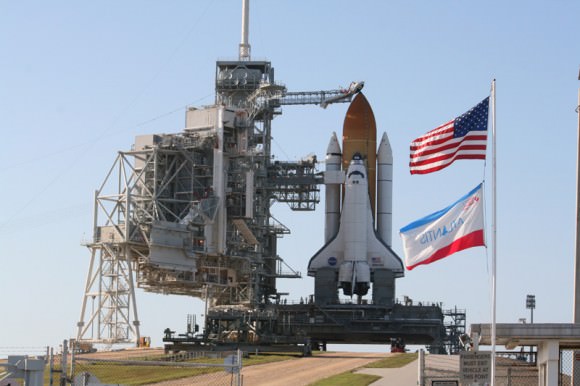
Atlantis will blast off on the final mission of the shuttle era in late June 2011. Credit: Ken Kremer
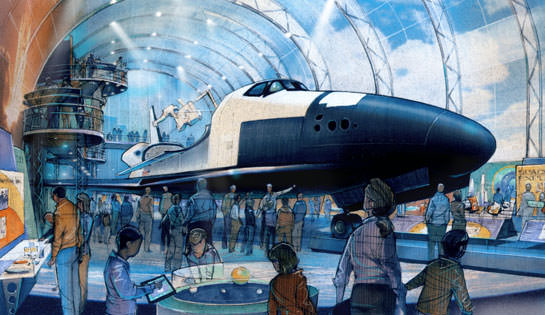
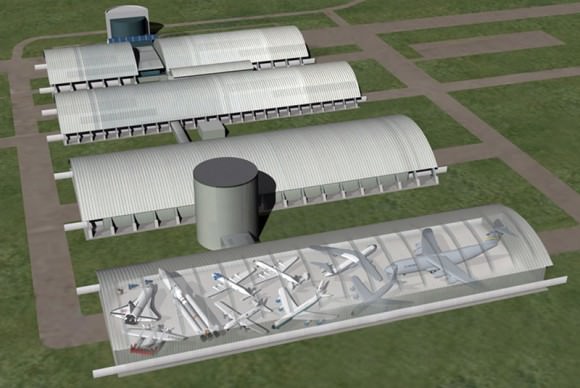
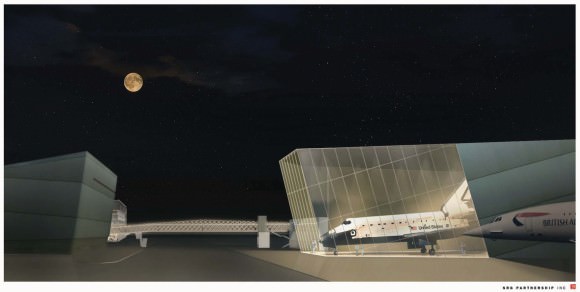

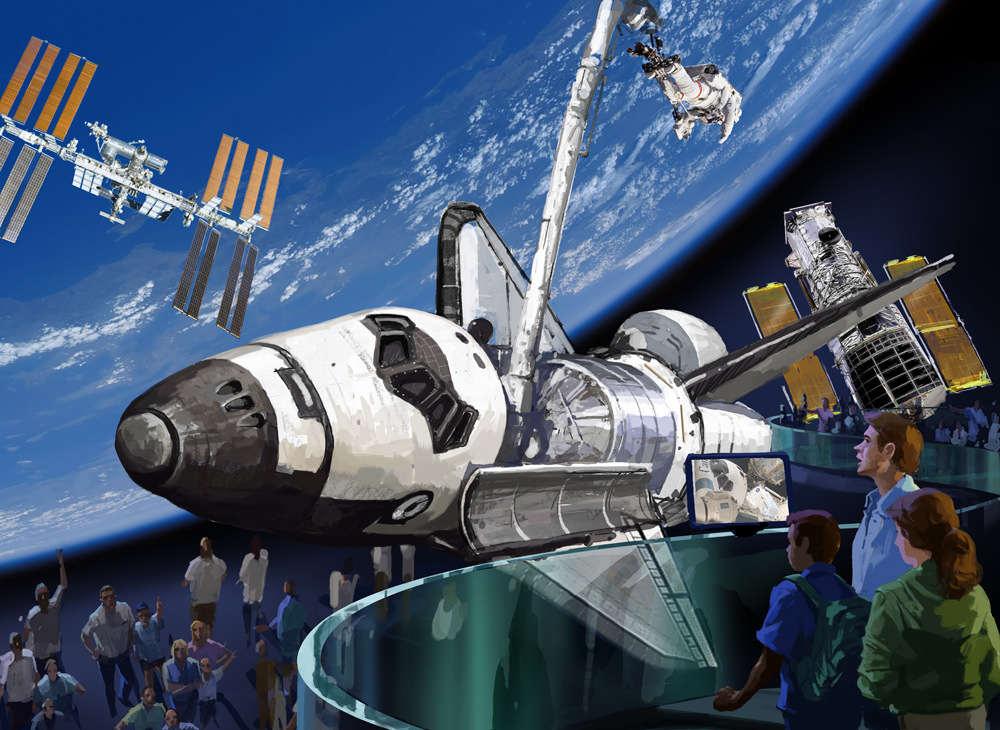
I boils down to which of the spider indigenous to these regions will get to spin their webs on or in the space shuttle.
LC
“Hey pa, is that a real spaceship?”,
“no son it’s probably a full size model”.
“is it from the Tianamen moonbase? or Mao Lagrange Station?”
“no, its an American spaceship, we used to have our own spaceships”
“what happened to them pa?”
“we ran out of money”
“where did the money come from for this museum then pa?”
I was thinking the same thing, we can’t afford the shuttle but these museums look pretty ambitious prices wise. Also bizarre to me is the enthusiasm to mothball and display these ships seems more ambitious than when we were actually using them.
I hope there’ll be a plaque in a prominent position saying, ” This how NOT to build a space craft”, or “This is how to waste money, resources, effort and the time of a generation”.
These vehicles and the men and woman who designed, maintained, supported and flew on them are the pride of our great nation and your comment is insulting to everyone. If you believe space travel and the shuttles are such a waste why are you at this site.
Although it’s a shame that the “Age of Shuttles” is drawing to a close it had to come eventually but, at the same time, it seems a shame that so many museums are willing to splash out 100s of millions of $$$ to have the privilege of housing them yet for lack of $$$ they can’t be kept flying!